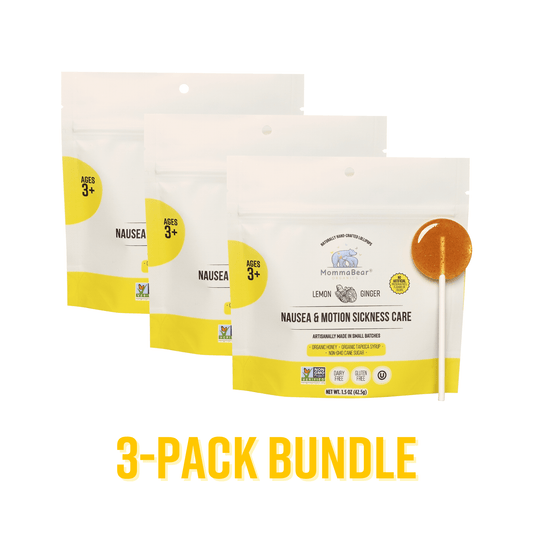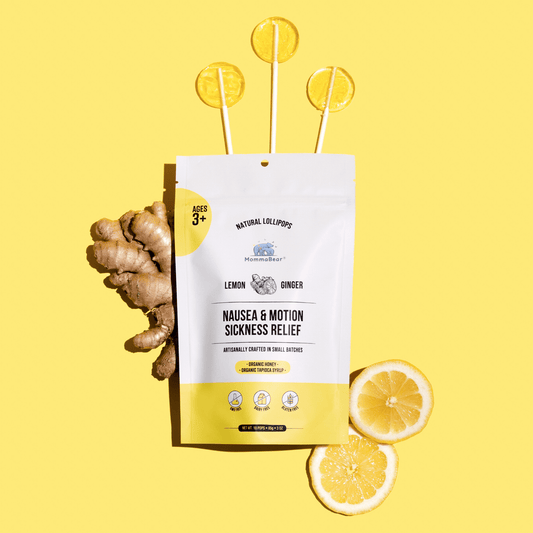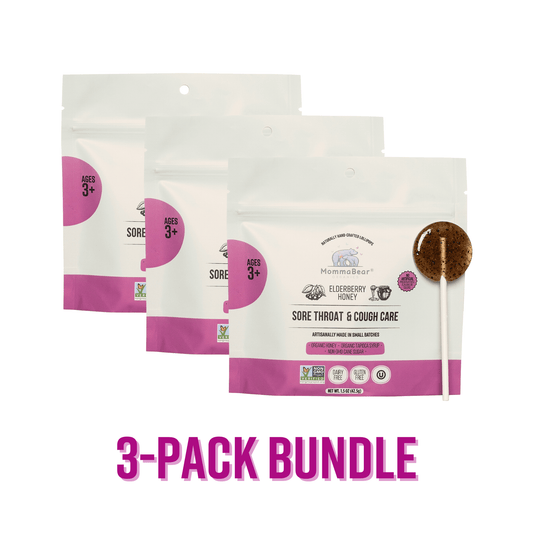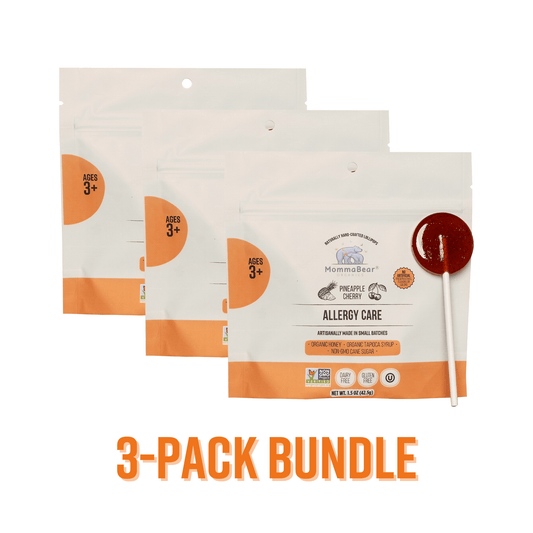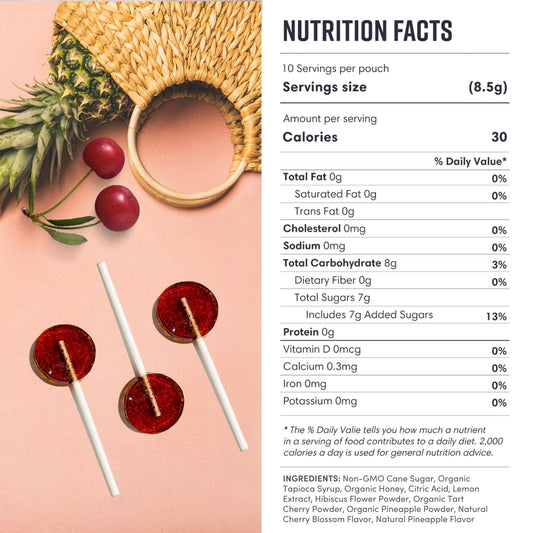So, let's talk about candy. It's a whole thing, isn't it? You want your kids to have fun treats, but then you start reading the labels and suddenly you're falling down this rabbit hole of ingredients you can't even pronounce. For me, that rabbit hole led straight to GMOs, and honestly, it’s been a learning process. It feels like one more thing to worry about, but I think it’s worth paying attention to.
Here’s kind of the short version of what I’ve figured out so far:
-
Why Non-GMO Matters: I started looking into this because of pesticides, mainly. A lot of GMO crops are designed to handle heavy-duty chemicals, and that just doesn't sit right with me.
-
How to Identify Non-GMO Candy: This part is getting easier, thank goodness. I’ve learned to look for two main things: the little butterfly label from the Non-GMO Project or the USDA Organic seal.
-
Benefits: It just feels better knowing we’re dodging extra pesticides and some of the super common GMO ingredients like corn syrup. Plus, it seems better for the planet, which is always a good thing.
-
Where to Buy: You can find them in stores like Whole Foods, but I get a lot of our stuff online. It's just easier to browse.
And a few quick things I try to remember when I’m in a hurry:
-
Avoid candy with high fructose corn syrup, soy lecithin, or canola oil unless it’s got one of those seals on it.
-
That butterfly logo from the Non-GMO Project is basically the gold standard.
-
We really like brands like MommaBear Organics or Surf Sweets. They're my go-to's.
It’s not just about what’s better for my kids, you know? It feels like it’s about making a choice that’s a little kinder to the earth, too. Anyway, if you're curious, stick around. I’ll share what I’ve learned about how to shop a little smarter.
Benefits of Non-GMO Candy
Health Benefits
Honestly, the whole pesticide thing is what got me started on this. I read somewhere that something like 80% of GMO crops are just engineered to survive being sprayed with weed killers. And when you think about it, it makes sense why the companies making the seeds are also the ones selling the chemicals. Then I heard that genes from these crops were found in pregnant women. I mean, there’s a lot of debate about whether that’s directly harmful, but the whole idea just makes me feel… uneasy.
It also turns out that choosing non-GMO supports farming that’s just, well, nicer to the environment.
Farming Practices That Support Non-GMO Candy
And that’s the other side of it that I’ve been learning about. It’s not just about what’s in the candy, but how the ingredients were grown. It feels like a bigger-picture kind of thing. This is what I’ve gathered so far:
-
Improved Soil Health: When farmers aren't using the same intense methods, the soil is actually healthier, which I guess means the food grown in it is better, too.
-
Less Chemical Dependency: This is the big one for me. It just means fewer synthetic pesticides and fertilizers ending up in our environment.
-
Biodiversity Conservation: It helps keep different kinds of plants around, which is apparently really important for a healthy ecosystem.
-
Combatting Superweeds and Superbugs: I guess when you use the same chemicals over and over, you get weeds and bugs that are resistant to them. So, avoiding that seems like a good long-term plan for farming in general.
Common GMO Ingredients and Alternatives
At first, trying to figure out which ingredients to avoid felt completely overwhelming. Corn syrup, soy this, canola that… it’s in everything! So yeah, I made a little cheat sheet for myself. It’s not as complicated as it seems once you know the main culprits.
Here’s a simplified version of what I keep in my head:
| Category | Common GMO Ingredients | Non-GMO Alternatives |
|---|---|---|
| Sweeteners | High fructose corn syrup, Dextrose, Confectioners sugar | Pure cane sugar, Organic honey, Maple syrup |
| Oils | Canola oil, Vegetable oil, Corn oil | Coconut oil, Organic palm oil |
| Thickeners | Modified food starch, Maltodextrin, Cornstarch | Tapioca starch, Arrowroot |
| Additives | Various synthetic options | Sunflower lecithin, Natural sweeteners |
I saw a statistic somewhere that blew my mind—something like 93% of corn and 96% of soybeans in the U.S. are genetically modified. That’s… a lot. It really makes you understand why looking for those trusted seals, like the Non-GMO Project or USDA Organic, is so important.
Finding Non-GMO Candy
Non-GMO Certifications
So, how do you actually find the good stuff in the store? The butterfly logo. I swear, now that I know to look for it, I see it everywhere. It’s from a nonprofit called the Non-GMO Project, and from what I’ve read, they have the toughest standards in North America, which is pretty reassuring.
The other one I trust is the USDA Organic seal. If something is certified organic, it can't have GMOs in it. That's part of the rule. So looking for words like "100% organic" or "organic" on the package is a pretty safe bet.
Once you get used to spotting these logos, you can start digging into the actual ingredient lists.
Checking Ingredients
Honestly, reading the labels is key. So many candies have sneaky ingredients that come from GMOs. I use a little mental checklist, kind of like the one below, to spot the usual suspects and think about what the better options are.
| Ingredient Type | GMO Sources | Safer Alternatives |
|---|---|---|
| Primary Sweeteners | High fructose corn syrup, Dextrose | Pure cane sugar, Organic honey |
| Thickening Agents | Modified food starch, Maltodextrin | Tapioca starch, Arrowroot |
| Additives | Soy lecithin, Corn syrup solids | Sunflower lecithin, Natural extracts |
| Oils | Canola oil, Soybean oil | Coconut oil, Organic palm oil |
It's just a little guide to help avoid those hidden GMO ingredients.
Non-GMO Candy Lists
Once you know about the certifications and what to look for, it helps that a lot of stores are making it easier to find things. Especially online, you can often just filter your search. I’ve noticed they usually break it down into two types:
-
Non-GMO (Certified): This is the stuff that has been officially verified by the Non-GMO Project or is certified organic. This is the stuff you can feel most confident about.
-
Non-GMO (All): This is a broader category. It includes the certified stuff but also products that the company just says are GMO-free. It’s good, but the certified label carries more weight for me.
It seems like a lot of people are catching on. I read that a third of shoppers are actively looking for that butterfly label now, which is probably why we're seeing more and more options on the shelves. It’s a good thing!
Top Non-GMO Candy Options
MommaBear Organics Lollipops
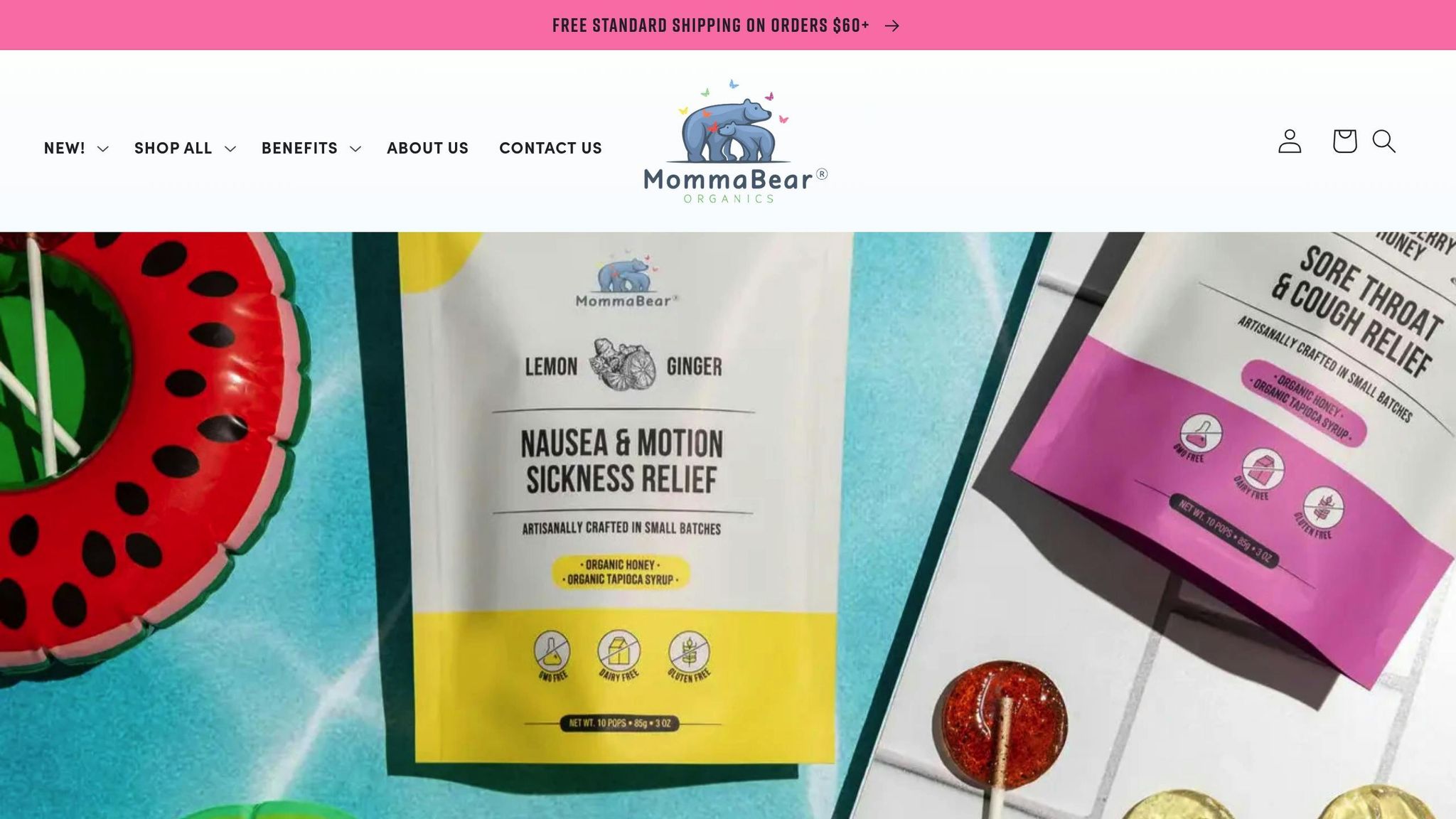
Okay, full disclosure, these are a staple in our house. I found MommaBear Organics a while back and just fell in love. They're these little organic lollipops made with wildflower honey, and they’re not just for a sweet treat. They have ones for things like car sickness, sore throats, and even allergies. It just feels good to give my kids something that’s actually trying to help, you know?
They’re made in small batches here in the US and don't have any of the junk—no GMOs, gluten, dairy, or high fructose corn syrup.
A bundle is $24.99 and comes with three kinds:
-
Motion Sickness & Nausea Relief
-
Sore Throat & Cough Relief
-
Allergy Relief
They even got a stamp of approval from Parent Tested Parent Approved (PTPA), which made me feel even better about them. They’re just a really thoughtful option, especially for kids 3 and up.
But of course, there are other great choices out there, too.
More Non-GMO Candy Choices
When we're looking for something different, like gummy bears or fish, Surf Sweets is usually on my list.
Here are a few of their options:
| Product | Price | Key Features |
|---|---|---|
| Surf Sweets Organic DelishFish | $5.99 | Organic and allergy-friendly |
| Surf Sweets Organic Fruity Bears | $5.99 | Made with natural ingredients |
| Surf Sweets Cinnamon Organic Bears | $5.99 | Made with carefully selected ingredients |
They use really good, natural ingredients, so they’re another solid GMO-free choice when you just need a little something sweet.
sbb-itb-e1a023f
Where to Buy Non-GMO Candy
Local Store Options
Finding this stuff in person used to feel like a real treasure hunt. Now, it’s getting much easier. Stores like Whole Foods Market or MOM's Organic Market usually have a pretty good natural foods section with non-GMO candies. If you can’t find what you need there, shopping online has been a lifesaver for me.
Online Shopping
Honestly, I buy a lot of our snacks online these days. It’s just simpler. I can read reviews, compare ingredients, and not feel rushed while my toddler is trying to pull everything off the shelves. Websites like the Natural Candy Store are great because they have a huge selection and label everything clearly.
Here are a few things I’ve seen on there:
| Product | Price | Features |
|---|---|---|
| Unreal Dark Coconut Chocolate Covered Almonds (4 oz) | $10.29 | Non-GMO Project Verified |
| Candy Tree Organic Cherry Lollipops | $10.99 | USDA Organic certified |
| Sjaak's Organic Vegan Bunny Bites | $7.79 | Dark Chocolate Cherry flavor |
Online stores usually explain what all the labels mean, too. Like, they’ll remind you that USDA Certified Organic foods are inherently non-GMO, which is helpful to remember.
Storage and Labels
Just a quick thought on this—I’ve learned to always, always double-check for those seals, either the butterfly logo or the USDA Organic one. They’re the easiest way to know for sure. And storing it right matters, especially with anything chocolate-based. I learned that the hard way one summer. Most packages will tell you to keep it in a cool, dark, and dry place. A lot of online stores also have filters like "Shop By Diet," which makes finding what you need so much faster.
These little things just make buying and storing non-GMO candy feel a lot less complicated.
Best Organic Halloween Candy Taste Test!
Making Smart Candy Choices
At the end of the day, it's really just about being a little more mindful, I think. Not being perfect, but just… aware. I've gotten into the habit of looking for those trusted certifications and trying to steer clear of things like high fructose corn syrup and all those artificial colors and flavors. You know, the stuff you can barely pronounce.
This is a little mental breakdown I use to remember what’s what when I’m standing in the aisle:
| Certification Type | What It Means | Testing Requirements |
|---|---|---|
| USDA Organic | At least 95% organic, so no GMOs allowed. |
No specific GMO testing needed, it’s just not allowed. |
| Non-GMO Project Verified | They follow super strict rules to avoid GMOs. |
They actually test ingredients that are at high risk for being GMO. |
| Natural (uncertified) | This one's tricky. It might mean they avoid artificial stuff, but there are no real rules or testing. | None. |
This table helps me make a quick, informed decision. But look, it's still candy. I’m not trying to pretend it’s a superfood. We try to balance it with healthier things like dried fruit.
And if you have allergies in your family, that’s a whole other level of label-reading. It’s been really nice to see more non-GMO brands offering allergen-free options made in separate facilities. It makes finding safe treats for everyone so much easier.
FAQs
How can I be sure a candy labeled as non-GMO is truly free of genetically modified ingredients?
Honestly, the best way I’ve found is to look for the Non-GMO Project Verified seal—that little butterfly logo. They actually test the ingredients that are at high risk of being GMO, which gives me real peace of mind. From what I've read, their rules are the strictest out there, so if you see that seal, you can feel pretty confident.
What are the benefits of choosing non-GMO candy for your family?
For me, it really boils down to two things. First, it's about trying to cut down on our family's exposure to all the extra chemicals and herbicides that are often used on GMO crops. It just feels… cleaner. And second, it feels good to support farming that isn’t so harsh on the environment. It's a small thing, I know, but it feels like it matters.
What candy ingredients are most likely to be genetically modified, and how can I avoid them?
Oh yeah, the big ones to watch out for are things like sugar (unless it specifically says "cane sugar"), corn syrup, and soy lecithin. Since a huge amount of the corn and soy grown in the U.S. is genetically modified, those are the main things I keep an eye out for on labels. The easiest way to avoid them is to just buy organic candy, since GMOs aren't allowed in organic products. Or, like I said, just look for that Non-GMO Project butterfly logo. It makes shopping so much faster.
It’s all a journey, isn't it? I definitely don’t get it right every time, and sometimes my kids end up with the super junky candy from a birthday party goody bag, and you know what? That’s okay. It’s not about being perfect. For me, it’s just about trying to make a slightly better choice when and where I can. I don’t know… it feels like a good place to start.


